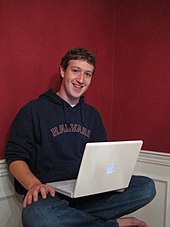To accomplish this, Zuckerberg hacked into the protected areas of Harvard's computer network and copied the houses' private dormitory ID images. Harvard at that time did not have a student "facebook" (a directory with photos and basic information). Facemash attracted 450 visitors and 22,000 photo-views in its first four hours online.
The site was quickly forwarded to several campus group list-servers, but was shut down a few days later by the Harvard administration. Zuckerberg was charged by the administration with breach of security, violating copyrights, and violating individual privacy, and faced expulsion. Ultimately, however, the charges were dropped. Zuckerberg expanded on this initial project that semester by creating a social study tool ahead of an art history final, by uploading 500 Augustan images to a website, with one image per page along with a comment section. He opened the site up to his classmates, and people started sharing their notes.
The following semester, Zuckerberg began writing code for a new website in January 2004. He was inspired, he said, by an editorial in The Harvard Crimson about the Facemash incident. On February 4, 2004, Zuckerberg launched "Thefacebook", originally located at thefacebook.com.
Six days after the site launched, three Harvard seniors, Cameron Winklevoss, Tyler Winklevoss, and Divya Narendra, accused Zuckerberg of intentionally misleading them into believing he would help them build a social network called HarvardConnection.com, while he was instead using their ideas to build a competing product. The three complained to the Harvard Crimson, and the newspaper began an investigation. The three later filed a lawsuit against Zuckerberg, subsequently settling.
Membership was initially restricted to students of Harvard College, and within the first month, more than half the undergraduate population at Harvard was registered on the service. Eduardo Saverin (business aspects), Dustin Moskovitz (programmer), Andrew McCollum (graphic artist), and Chris Hughes soon joined Zuckerberg to help promote the website. In March 2004, Facebook expanded to Stanford, Columbia, and Yale. It soon opened to the other Ivy League schools, Boston University, New York University, MIT, and gradually most universities in Canada and the United States.
Facebook incorporated in the summer of 2004, and the entrepreneur Sean Parker, who had been informally advising Zuckerberg, became the company's president. In June 2004, Facebook moved its base of operations to Palo Alto, California. It received its first investment later that month from PayPal co-founder Peter Thiel. The company dropped The from its name after purchasing the domain name facebook.com in 2005 for $200,000.
Date | Users | Days later | Monthly growth[N 2] |
|---|---|---|---|
| August 26, 2008 | 100 | 1,665 | 178.38% |
| April 8, 2009 | 200 | 225 | 13.33% |
| September 15, 2009 | 300 | 150 | 10% |
| February 5, 2010 | 400 | 143 | 6.99% |
| July 21, 2010 | 500 | 166 | 4.52% |
| January 5, 2011 | 600[N 3] | 168 | 3.57% |
| — | 700 | 38 (ongoing) | — |
On October 24, 2007, Microsoft announced that it had purchased a 1.6% share of Facebook for $240 million, giving Facebook a total implied value of around $15 billion. Microsoft's purchase included rights to place international ads on Facebook. In October 2008, Facebook announced that it would set up its international headquarters in Dublin, Ireland. In September 2009, Facebook said that it had turned cash flow positive for the first time. In November 2010, based on SecondMarket Inc., an exchange for shares of privately held companies, Facebook's value was $41 billion (surpassing eBay's slightly) and it became the third-largest US Web Company after Google and Amazon. Facebook has been identified as a possible candidate for an IPO by 2013.
Traffic to Facebook increased steadily after 2009. More people visited Facebook than Google for the week ending March 13, 2010. Facebook also became the top social network across eight individual markets in Asia—the Philippines, Australia, Indonesia, Malaysia, Singapore, New Zealand, Hong Kong and Vietnam, while other brands commanded the top positions in certain markets, including Google-owned Orkut in India, Mixi.jp in Japan, CyWorld in South Korea, and Yahoo!’s Wretch.cc in Taiwan.

0 comments:
Post a Comment